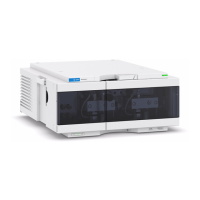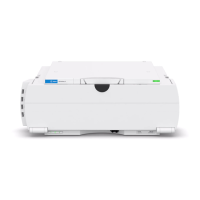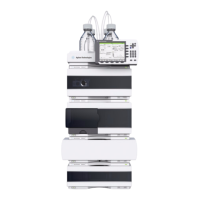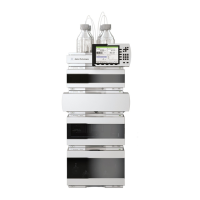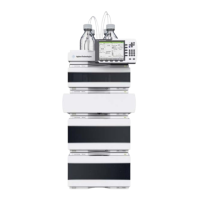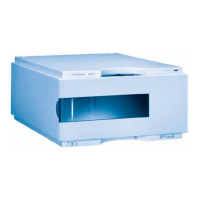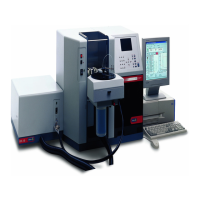120 1220 Infinity II LC System User Manual
8
Detector Description
Agilent 1220 Infinity II LC Diode Array Detector (DAD)
Agilent 1220 Infinity II LC Diode Array Detector (DAD)
Introduction to the Detector
The detector is designed for highest optical performance, GLP compliance and
easy maintenance. It includes the following features:
• 80 Hz data acquisition rate for (ultra-) fast LC applications
• RFID tags for all flow cells and UV-lamps provides traceable information
about these assemblies
• Long-life deuterium with RFID tag and tungsten lamps for highest intensity
and lowest detection limit over a wavelength range of 190 – 950 nm
• No loss in sensitivity for up to eight wavelengths simultaneous
• Programmable slit from 1 – 16 nm for complete optimization of sensitivity,
linearity and spectral resolution
• Optional flow-cell cartridges with RFID tag (standard 10 mm13 μL,
semi-micro 6mm5μL, micro 3mm2μL, 80nL, 500nL, 10mm, high
pressure 10 mm1.7 μL and prep-cells) are available and can be used
depending on the application needs.
• Easy front access to lamps and flow cell for fast replacement
• Built-in holmium oxide filter for fast wavelength accuracy verification
• Built-in temperature control for improved baseline stability
• Additional diagnostic signals for temperature and lamp voltage monitoring
For specifications, see “Performance Specifications Agilent 1220 Infinity II LC
DAD” on page 26.
Optical System
The optical system of the detector is shown in Figure below. Its illumination
source is a combination of a deuterium-arc-discharge lamp for the ultraviolet
(UV) wavelength range and a tungsten lamp for the visible (VIS) and
short-wave near-infrared (SWNIR) wavelength range. The image of the
filament of the tungsten lamp is focused on the discharge aperture of the

